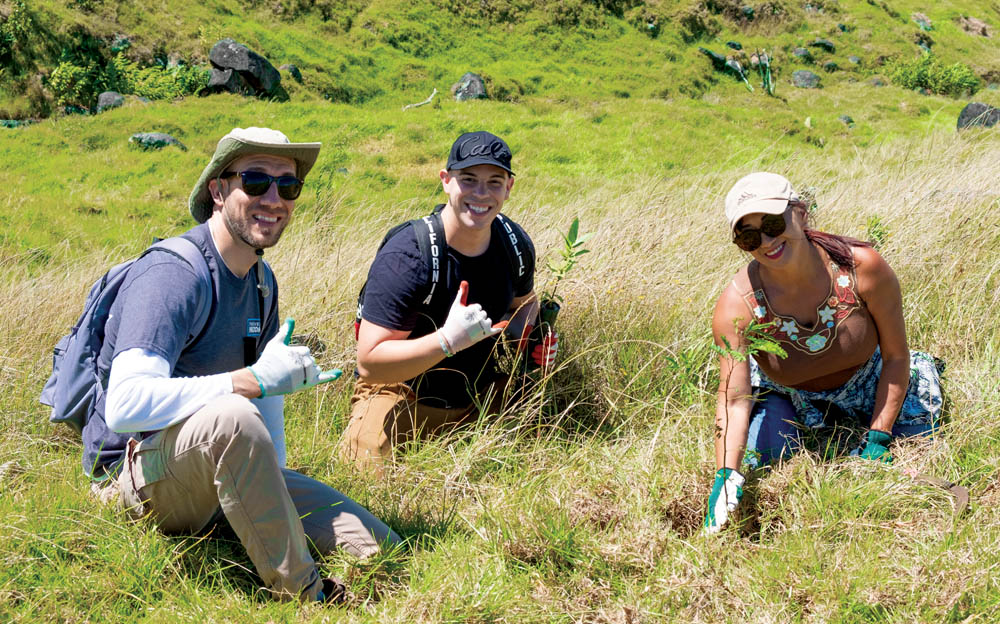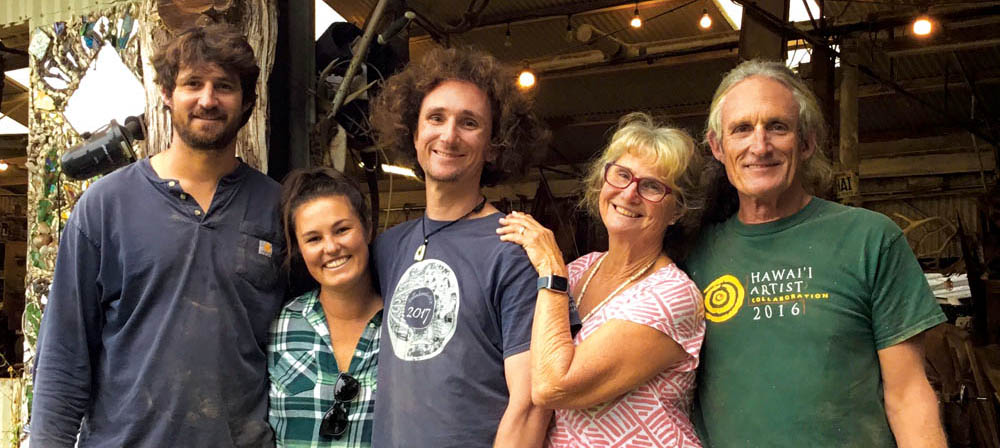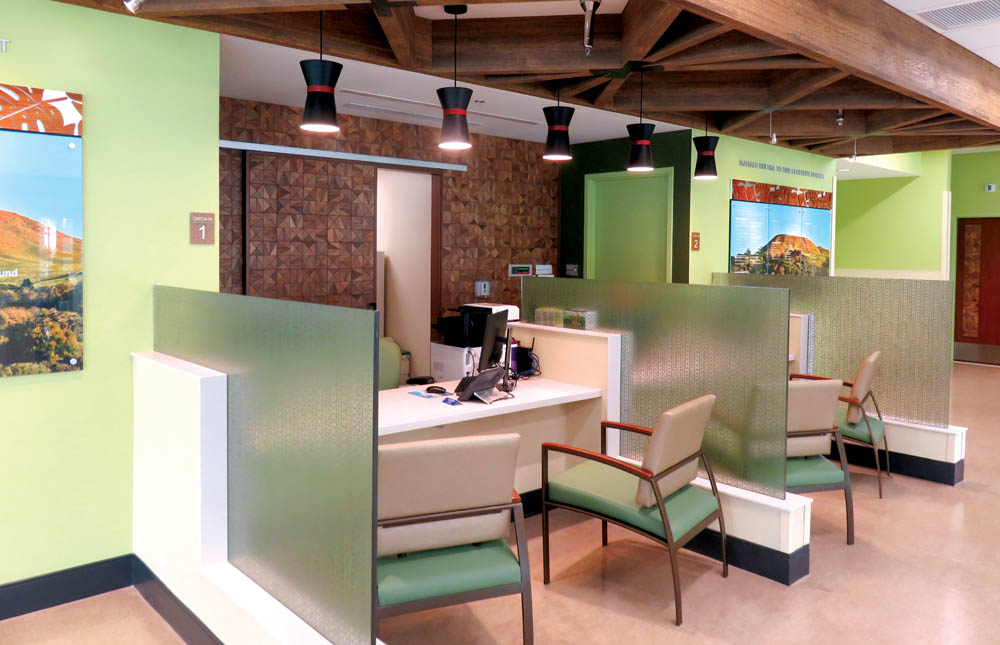
Mālama Mokupuni—Caring for Our Island Environment: Know Your Place

By Rachel Laderman

As we celebrate the 50th Earth Day, we are faced with environmental problems that are larger than ever—sea level rise, coral bleaching, extinctions, extreme weather. What can we possibly do in the face of these super-sized challenges? One approach is to get super-local.
“One big thing we can do is to know your place. Yes, there is more than one meaning there!” says Liam Kernell, director of communications at The Kohala Center, an independent community center for research, conservation, and education in Waimea. “We’re so disconnected these days—reconnecting with the natural world can lead us towards making conscious choices.”
The Kohala Center is embracing “knowing your place” as a way forward for their workplace, as well as in the work they do. “We, ourselves, are on a journey to deepen our kinship with Kohala, its history, its ancestral knowledge and practices,” says Cheryl Ka‘uhane Lupenui, The Kohala Center’s president and chief executive officer. “In essence, we are adopting a more Hawaiian, ancestral way of thinking and engaging with the natural world.”
Here are two ways to deepen your knowledge of place:
(1) Learn Place Names
“Start with learning the name of your place, just like meeting a person and being introduced,” suggests Cheryl. Loving research, Cheryl has found it fascinating to look in different Hawaiian dictionary editions, and compare definitions from old and new sources, gaining different perspectives on place names.

Learn the name of your ahupua‘a—the historic land division system of the Hawaiians—and its subsets. Then go further and learn the names of the rain and winds in your area. A wonderful resource is the book Hānau ka Ua, Hawaiian Rain Names, by Collette Leimomi Akana and Kiele Gonzalez, containing a collection of 200 rain names from across the islands gleaned from researching sources such as mele (chants, songs), mo‘olelo (stories, legends), and Hawaiian newspapers. As the authors say, “Rain names are a precious legacy from our kūpuna who were keen observers of the world around them and who had a nuanced understanding of the forces of nature. They knew that one place could have several types of rain, each distinct from the other. They knew when a particular rain would fall, its color, its duration, its intensity, its path, its sound, its scent, and its effect on the land and their lives.”
The mother-daughter authors are working on their next book, Hānau ka Makani: Hawaiian Wind Names, which is even longer—they have found more than 600 wind names.
(2) Practice Kilo—Environmental Observation
“Kilo” in Hawaiian means to pay attention, to be a keen observer. Kilo is an intentional practice of learning. Cheryl says, “Practitioners say to kilo the same thing all the time. Pick something that matters and constantly look at it, draw it over and over. Take pictures in the sun, in the rain, be in its presence. What trees are blooming? What is the phase of the moon? Look mauka and makai, observe the birds, when the breezes and mists come. You may not know what’s important but just hone in and you will notice things over time.”

This practice is not easy for those of us used to constant entertainment and connection via phones and internet. It builds patience and has unexpected rewards in the form of detailed and profound observations about place.
“Sure, we can use reusable shopping bags and plant trees and use less sunscreen,” says Liam. “But when we get to know our place—touch the soil, envision where our water started and how it got to us, know what kinds of foods and native plants used to grow in the lands we call home, research history and mo‘olelo and ancestral knowledge—and then also ‘know our place’—that we are not controllers of our ecosystems, but part of it; that ‘āina is not ours to exploit, but to take care of so that it can care for us—that is when planting a tree, clearing invasive species, reducing our use of chemicals that damage our ecosystems, becomes more meaningful. For it is then that weʻre not just merely checking off boxes, weʻre actually taking care of our ‘ohana.” ❖
For more information:
kohalacenter.org, aimalama.org
Rachel Laderman, Sustainable Pacific Program, Lynker LLC/NOAA Affiliate, Hawaii Island
All photos courtesy of The Kohala Center


